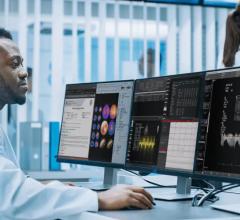April 24, 2008 - ProSolv CardioVascular, a FUJIFILM company, will interface its cardiovascular image and information system (CVIIS) with QLAB, 2D and 3D ultrasound quantification tools software from Philips.
Facilities using Philips ultrasound systems will now have access to Philips' QLAB advanced 2D and 3D ultrasound quantification tools within the ProSolv CardioVascular application, designed to deliver efficiency benefits for clinicians and enhancing the accuracy of diagnosis.
"With the ProSolv-QLAB integration we still get all the diagnostic benefits and full functionality of the QLAB software that we previously had, but now with countless workflow and patient care benefits," said Jim Swan, M.D., cardiologist with Rouge Valley Cardiology, Toronto. "We're thrilled to be one of the initial sites to be working with ProSolv CardioVascular and Philips and benefiting from this integration. From our experience and positive results, I think it's safe to say that there will be tremendous demand from other customers for this type of integration,"? said Dr. Swan.
"We are committed to supporting interoperability with other vendors, and ProSolv CardioVascular's interface to our QLAB ultrasound application is a manifestation of our connected workflow strategy," said Neal Grotenhuis, product manager, Cardiology Ultrasound IT, for Philips Healthcare. "We recognize that not all customers will have a single vendor lab and are more likely to choose equipment from vendors who work with each other to improve connected workflow. Having a customer-focused approach and a cooperative strategy with other vendors allows clinicians to choose equipment that best meets their needs based on clinical features, value and workflow."
The ProSolv-QLAB interface is engineered to allow users to launch the QLAB application directly from the image while within the ProSolv CardioVascular application performing image review and reporting. This capability creates aims to create efficiencies during the diagnostic cycle by eliminating the need to perform the quantification on the ultrasound system after the images are acquired; it also eliminates the need to send the images to a stand-alone laptop or workstation for quantification. In addition to benefiting from this enhanced workflow, facilities also benefit from the potential to increase throughput of their ultrasound systems. With the ProSolv-QLAB interface it is possible to increase the number of patient exams because the ultrasound systems are no longer occupied with the advanced QLAB analysis.
In addition to workflow efficiencies, the ProSolv-QLAB interface may reduce the potential for manual data entry errors, says the manufacturer. Images and data that are generated from the QLAB analysis can reportedly be exported directly into the ProSolv CardioVascular database and clinical report to complete the clinical record. The interface of QLAB version 6.0 and ProSolv CardioVascular will be available in July 2008.
For more information: www.prosolv.com


 May 15, 2024
May 15, 2024 








